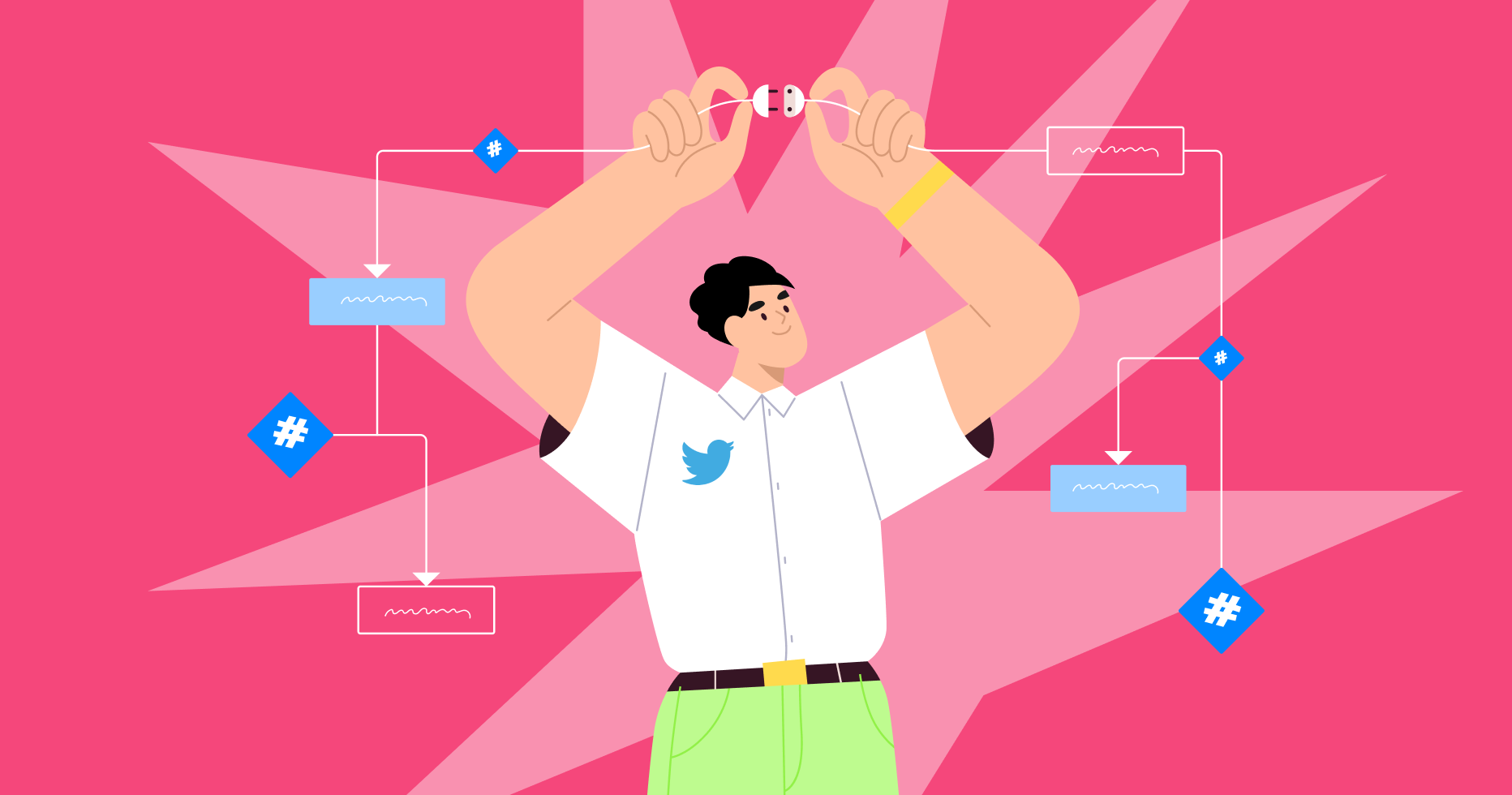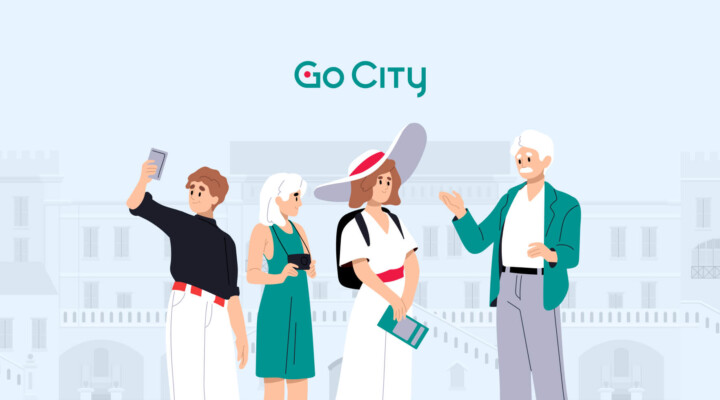What Are Hashtags
Hashtags are a combination of words or phrases with the # symbol, without any spaces or punctuation marks, for example, #travelphotography, #socialmedia, or #food. For a better user experience, hashtags should be rather short and easy to read. In contrast to keywords which take quite long to rank for, hashtags allow social media posts to appear in search results almost immediately.
How do hashtags work on Twitter? They are used to add context, categorize tweets, connect to a particular topic, and basically work like links, allowing users to quickly find relevant content. If you want to make the most of your hashtags, be sure to make your Twitter account public, otherwise non-followers won’t be able to discover your Tweets.
Why Twitter Hashtags Are Important
Hashtags first appeared on Twitter and then spread to other social networks like Facebook, Instagram, etc. There are plenty of reasons for their common use. Here are some of the main advantages of using hashtags in Tweets:
- Expand your reach. Hashtags help reach not only your followers, but anyone interested in the topic.
- Increase engagement. Statistics indicate that tweets with hashtags generate two times more buzz than tweets without. Engagement here means clicks, retweets, replies, etc.
- Categorize tweets. With hashtags, you can group all tweets around a specific topic and make your content easy to navigate.
- Attract target audience. By using relevant hashtags, you’ll increase chances of attracting users interested in your specific content and growing your following.
- Grow brand recognition. Create a hashtag for your business to increase brand awareness and promote it more efficiently.
- Support social causes. Hashtags connected to a social issue will raise awareness and show that you care. This will help create a positive image of your business.
- Add context. While Twitter allows for only 280 characters to use in a caption, this is a rather small volume, but hashtags can give you extra space and add necessary context without taking up valuable characters.
How to Research Twitter Hashtags
To make the most of your hashtag strategy on Twitter, you need to find and use keywords that are the most relevant for your content and audience. You can use native Twitter search or dedicated tools, look up to hashtags in your competitors’ content and check related hashtags. Make sure you understand the meaning of each hashtag, as they often take on additional connotations.
1. Twitter Search
You can find popular hashtags right inside Twitter in the “What’s happening” sidebar on the desktop or the Explore tab. There, you can find topics that are gaining momentum and driving conversations to attract more users with trending hashtags. The “For you” section offers topics tailored to you based on your geolocation and profiles that you follow.
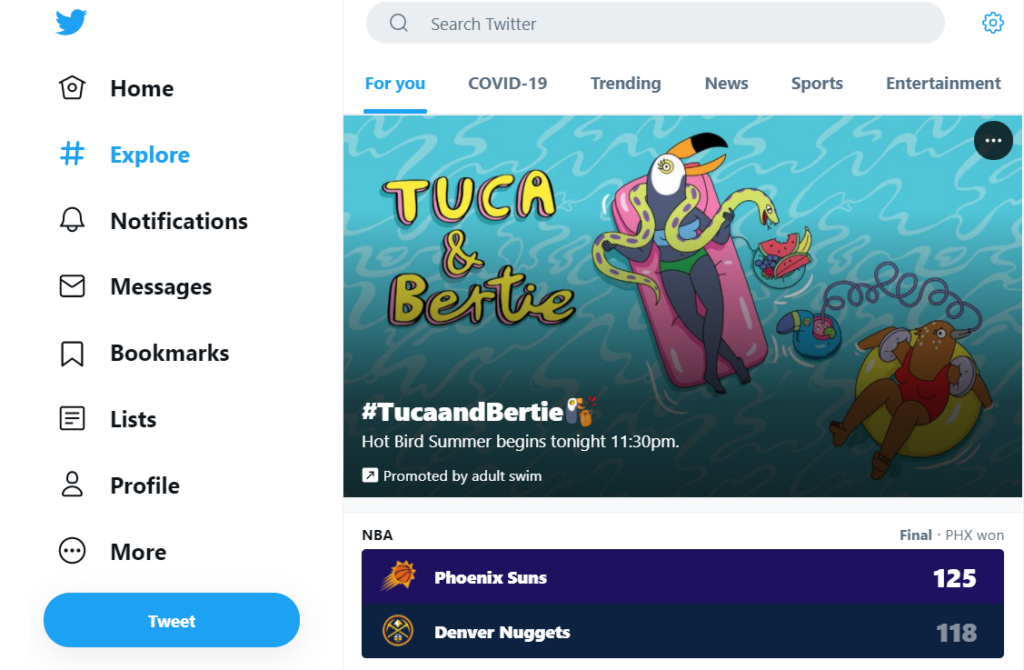
However, these tabs only let you discover general trends, and you can use special search tools to find more specific hashtags.
2. Dedicated Tools
Social listening tools like the ones below will help you discover more keywords that will be highly relevant for your audience and also check a Twitter hashtag for statistics.
- TweetDeck is a dedicated tool for tracking and organizing hashtags and conversations.
- Hashtagify.me allows you to search for any hashtag and see how popular and trendy it is.
- Hootsuite will help discover the best hashtags for the social networks that you use.
- SproutSocial lets you track and analyze hashtags that people use when they mention your brand.
- Tagboard shows the use of a hashtag across multiple social platforms.
- RiteTag helps you choose only relevant hashtags, and its visual organization options allow for a quick analysis.
You can start the search with a root hashtag related to your content. Think of the first word you use to categorize your offer, like #TravelBlog or #MakeMoneyOnline. Popular hashtags are not always the best ones to use, because they are so common that it’s hard to cut through the noise. Try to combine them with less used hashtags that are more specific.
Also check the usage volume of a hashtag. Tools like Hashtagify.me allow you to monitor how a hashtag has been used over a period of time and see whether it’s gaining or losing momentum.
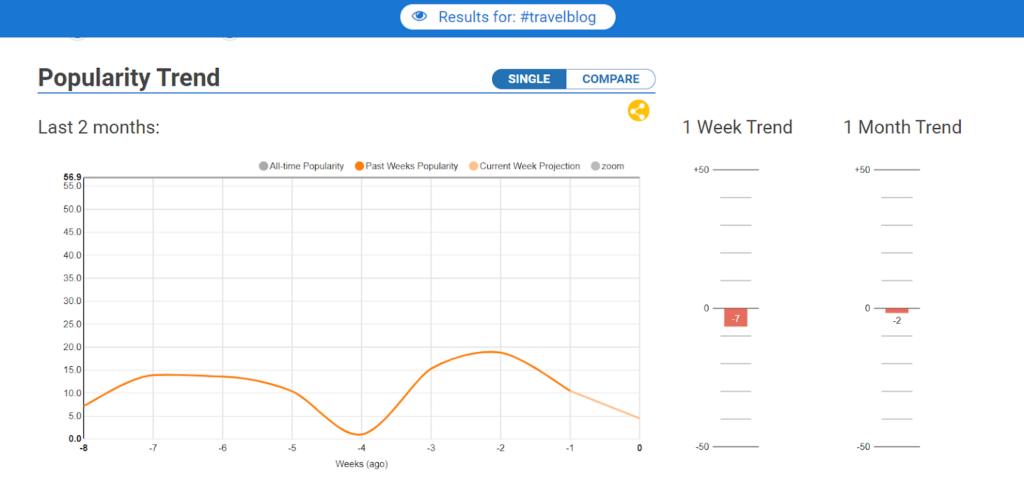
3. Check Competitors and Influencers
Analyzing competitors and influencers can also give you insights about trending hashtags that you may borrow for your content as well. Identify your direct competitors and check their profiles on Twitter: what hashtags did they use on the posts with the most engagement? The same goes for niche influencers. Look through their tweets and find the best-performing hashtags that you can use in your posts.
For example, Unbox Social can give you insights into your competitors tweets including their engagement rate, favorites, interactions, etc.
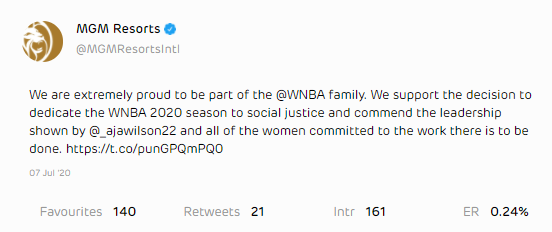
Vaizle gives you an opportunity to compare your Twitter page against that of your competitor and build a stronger content strategy. You’ll be able to see and compare posting frequency, types of content, engagement rates, and more.
4. Consider Related Hashtags
If you have a bunch of hashtags that work well for your audience, use related keywords to connect with more users. You can easily find such hashtags with the help of dedicated tools like Hashtagify.me and others. Just type in a hashtag of interest, press “Enter” and see detailed information about it as well as related keywords that people use in similar contexts.
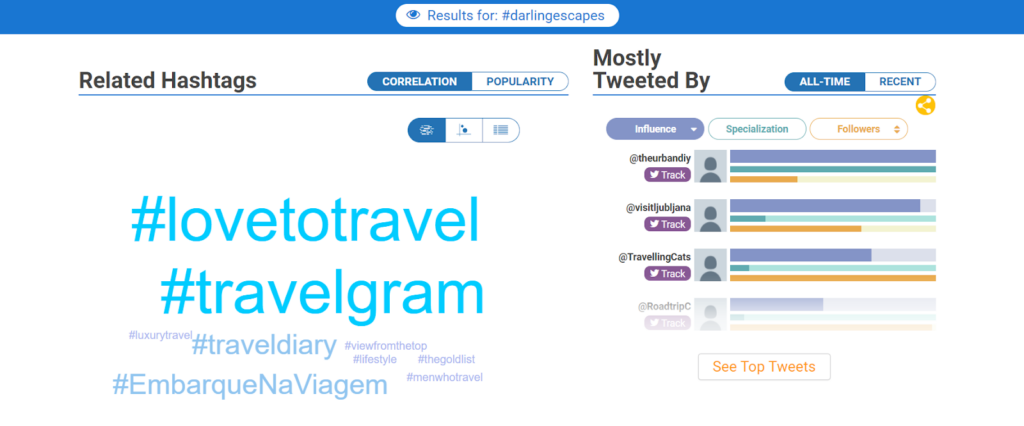
5. Analyze Your Past Posts
It would be useful to analyze your popular posts and see which hashtags you’ve used. If there’s a trend, take note of it for future posts. For instance, you may notice that most tweets with a particular hashtag got above-average attention and use this hashtag later on where appropriate.
How to Use Hashtags on Twitter
For proper marketing, it’s essential to use hashtags thoughtfully rather than insert them blindly and hope for the best. Below, we’ve gathered eight ideas for when you can use hashtags in your tweets.
Events
Events are amplified on social networks around the world on a daily basis. From sporting events to cultural moments, hundreds of thousands of people open Twitter to figure out what’s going on. You can join in on conversations around popular events by using relevant hashtags and share the information about the upcoming occasion, whether you are an organizer or just a participant.
People often start talking about an event weeks or even months before the big day, so you can take advantage of the pre-event buzz and launch tweets with the related hashtag in advance. It will allow people interested in the event to find out more about it. Then, use the hashtag while the event is happening to connect with those who follow it in real-time. Finally, you can create a tweet after the event has passed to recap it, share highlights, or give your opinion.
To connect with more users, you don’t have to only focus on events in your niche and can retweet other events with location relevant to your followers. For example, the @JourneyWoman travel resource shares an upcoming music event intended for Canadians, as the company is based in Toronto.
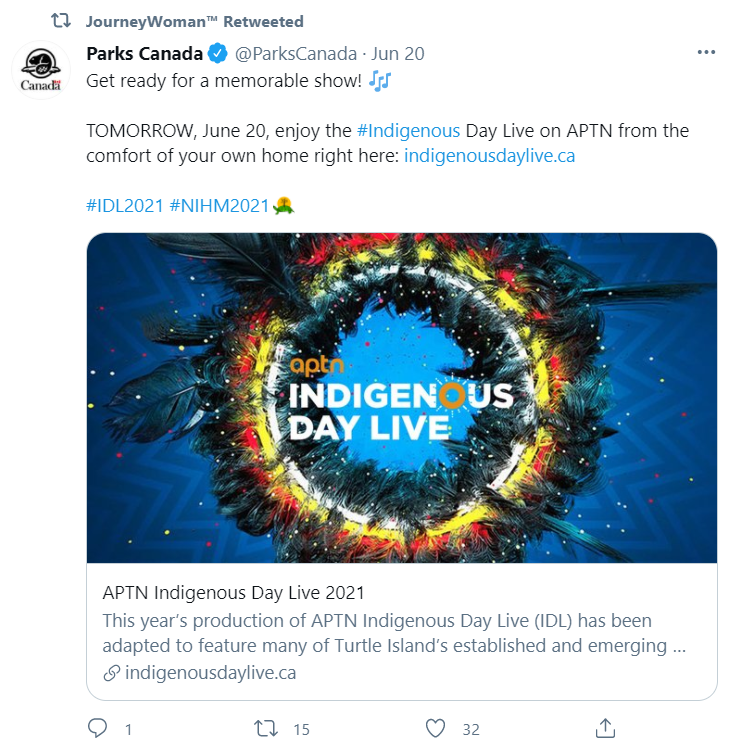
Holidays and Celebrations
National or global celebrations are another opportunity to connect with your community and follow the buzz. However, you can also take advantage of fun holidays like Grilled Cheese Day or Sing Out Day as long as it’s somehow related to your brand. For instance, Cher Norris, travel influencer, shares her love of the ocean on World Oceans Day and takes advantage of the relevant hashtag to drive more traffic.
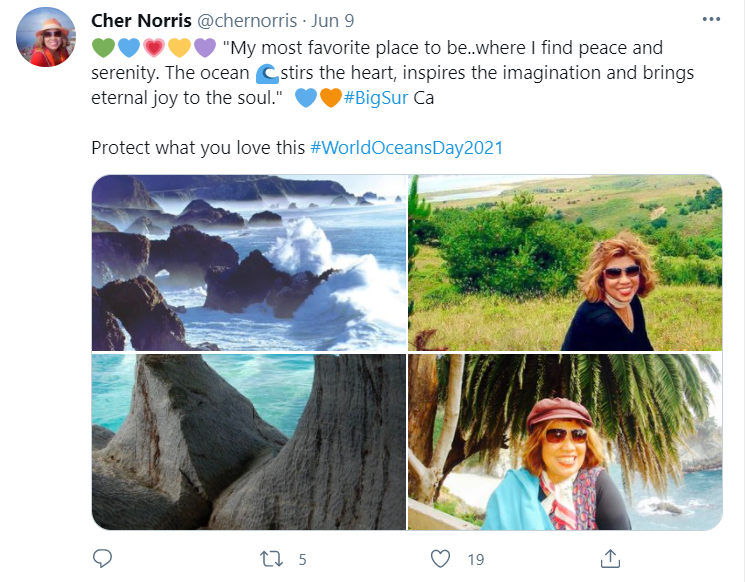
Branded Campaigns
You can add a special branded hashtag to increase your visibility as well as collect user-generated content and social proof. How do you create a hashtag on Twitter? Just take your brand’s or product’s name and add the # symbol in the beginning, given that it’s an unbroken word or phrase. Just like Tiffany Dowd, a luxury travel influencer, uses the #luxetiffany hashtag in her tweets.

Make sure to check hashtags. It may happen that someone has already used them with a different meaning. But if it’s just a few posts, you can safely take it over.
Many brands prefer to make a hashtag of their own, and here it’s important to follow three main rules:
- Make sure that the hashtag hasn’t been previously used with negative connotations.
- Don’t use too long phrases, stick to catchy, short hashtags
- Use capital letters to make hashtags more readable
One great example of a brand campaign is Nike’s “play inside to play for the world” tweet. Launched during the UK lockdown, the campaign was designed to inspire people to keep dreaming despite the restrictions and was picked up by millions of people worldwide.
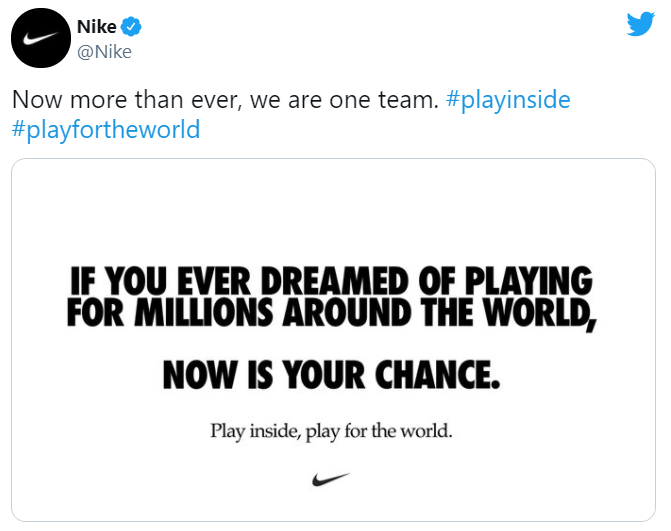
Locations
Site-specific hashtags are a great way to connect with your local audience and create more engagement. Higher engagement means bigger exposure, which is altogether important for your brand growth. For example, it can be a place where your business is situated or where your next event takes place.

Even if you don’t have a set location, you can still choose specific sites which might attract the attention of your prospects, or indicate the place that you mention in your post to connect with users there.
Popular Challenges and Trends
To expand your reach, join in on popular trends and challenges. For instance, take advantage of weekly challenges, for which Twitter suggests the following hashtags:
- #MotivationMonday
- #TransformationTuesday
- #WednesdayWisdom
- #ThrowbackThursday
- #FridayFeeling
- #Caturday
- #SundayFunday
You can add this hashtag to your tweet depending on the day of the week and extend your reach, just like in the example below, where @DonNadeau takes advantage of the #TravelTuesday hashtag.
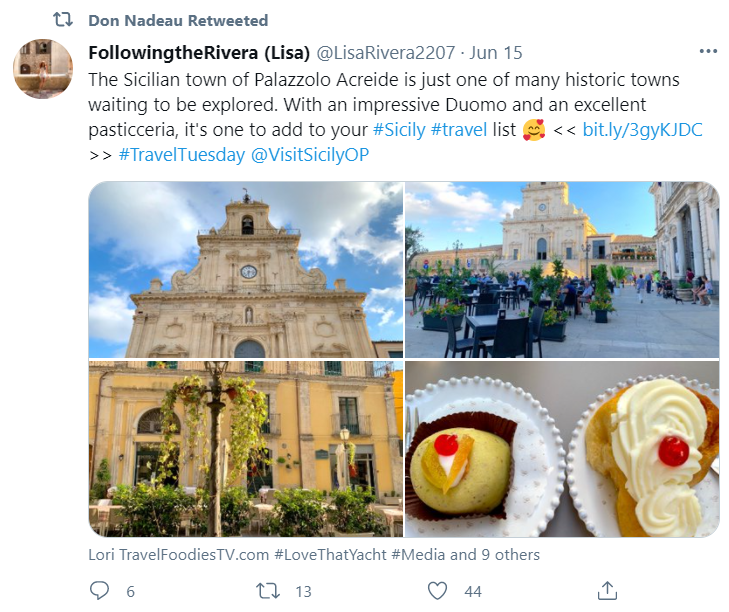
Supporting Causes
Plenty of brands give serious attention to supporting causes in order to connect with socially conscious audiences. Sprout Social reports that 70% of consumers believe that companies should stand up for public issues.
In the middle of the pandemic, many brands and influencers use their voice to encourage people to stay safe. Many of the slogans have become hashtags, for instance, #HaveVaccineWillTravel, that influencers use in their posts.
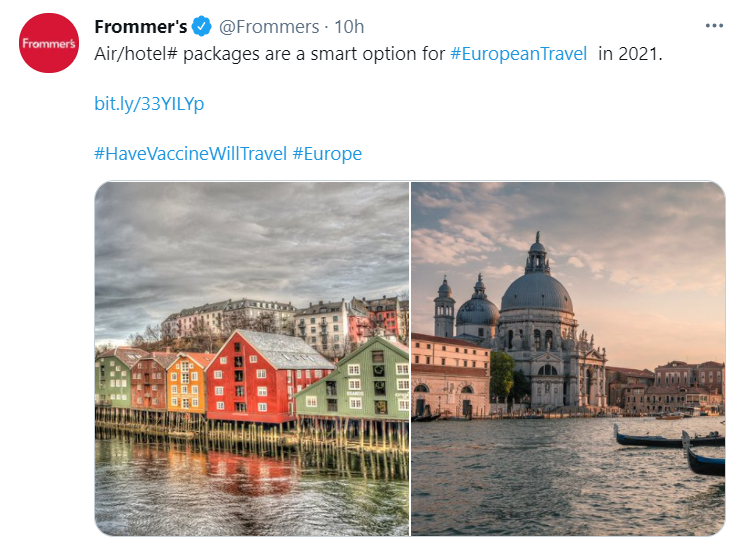
Another example of a campaign supporting public health is the #StayHome hashtag, used by numerous brands to encourage social distancing.
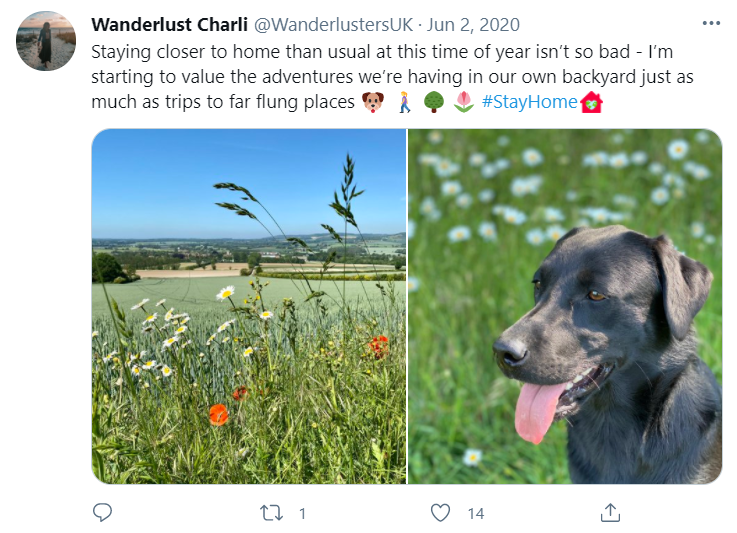
Posting About General Interest Topics
One more way to reach more users is by using hashtags of general interest. While perhaps not suitable for attracting a highly targeted audience, such hashtags can add visibility to your posts and connect them to a broader conversation.
How Many Twitter Hashtags Should You Use
Hashtags are an excellent way to increase engagement on your posts, but having too many can make things worse instead of better. Statistics indicate that tweets with one or two hashtags receive 21% more engagement than posts with three hashtags or more. If you use them too much, it may look spammy and far-fetched. Watch this “hashtag” video from Jimmy Fallon and Justin Timberlake to see what a Twitter conversation with lots of hashtags would look like in real life.
Do’s and Don’Ts of Hashtags on Twitter
And finally, here are a few things to keep in mind when you use hashtags on Twitter.
Do’s
- Make hashtags easy to remember to guard users against any possible typos to make your content discoverable.
- Offer incentive if you want people to use your branded hashtag, for example, offer them to be featured on your page or run a contest for the most engaging user-generated content, etc.
- Do research to find out which hashtags people use when talking about your brand. Try to capitalize on those.
- Boost the visibility of your brand hashtag by partnering with influencers and other brands in your niche.
Don’ts
- Don’t use too many hashtags. The sweet spot is one or two hashtags, while too many of them may look spammy and irrelevant.
- Don’t make hashtags long. If you want your whole slogan to become a hashtag, it may look too burdensome and repel users.
- Don’t neglect to check the meaning of hashtags you use. While it may seem obvious, it may just so happen that hashtags have been previously used with different connotations, which could undermine your campaign’s success.
- Don’t use a caps lock. It will feel like shouting and look off-putting.
How to Use Hashtags on Instagram
Hashtags are a powerful avenue to brand promotion on social media, and Twitter is no exception. They allow marketers to reach a wider audience, boost visibility and engagement and categorize content. In addition to general hashtags, you can use branded hashtags to increase brand awareness and encourage user-generated content. For better campaigns, make sure to find the most relevant hashtags and use them thoughtfully in your tweets.

